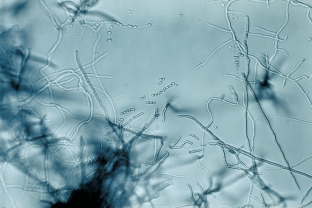The human body normally contains hundreds of types of microorganisms: bacteria, protozoa, viruses, fungi. Opportunistic pathogens constitute the normal microflora of a person, without harming him.
Some reasons contribute to the transition of some bacteria from the normal microflora to the parasitic state. Among such bacteria, capable of being both useful and pathogenic, scientists distinguish actinomycetes. What are actinomycetes, and what disease they provoke, read in our article on estet-portal.com.
The role of actinomycetes in the bacterial flora of the body
It is often impossible to draw a clear line between saprophytes and pathogenic microbes that are part of the normal microflora. All microbes that live in the human body are simultaneously in these two states. Any of them can be the cause of infectious processes. Harmless "helpers" (lactobacilli, bifidobacteria) with a high degree of colonization can cause diseases.
And vice versa, pathogenic bacteria (pneumococci, meningococci, clostridia), colonizing the surfaces of human organs, do not cause disease, which is facilitated by the competition of the previously formed microflora and the protective abilities of the macroorganism. Under what circumstances the opportunistic flora causes the disease, read further on estet-portal.com. One of such "double" agents of the human normobiota are actinomycetes.
In the human body, actinomycetes saprophyte on the skin, in the oral cavity, dental plaque, tonsil lacunae, upper respiratory tract, bronchi, mucosa of the gastrointestinal tract, vagina and anal folds.
Actinomycetes are widely distributed in the environment: in soil, water, including tap and spring water, in hot mineral springs, on plants, on stony rocks and even in deserts.

What are actinomycetes? Characteristics of actinomycetes
The term "actinomycetes" (the obsolete name "radiant fungi") is currently used to cover a wide range of gram-positive aerobic and microaerophilic bacteria that have the ability to form branching mycelium with characteristic sporulation, as well as irregularly shaped rods and coccal elements that form as a result of fragmentation of the mycelium.
Actinomycetes include bacteria of the genera Actinomyces, Actinomadura, Bifidobacterium, Nocardia, Micromonospora, Rhodococcus, Streptomyces, Tsukamurella.
The following factors contribute to the transition of actinomycetes from a saprophytic to a parasitic state:
- decrease in the body's immune defenses;
- the presence of severe infectious or somatic diseases (chronic pneumonia, purulent hydradenitis, diabetes, etc.);
- inflammatory diseases of the mucous membranes of the oral cavity;
- inflammation of the respiratory and gastrointestinal tract;
- surgical interventions;
- long-term use of intrauterine contraceptives;
- hypothermia, injuries.
How do actinomycetes contribute to the development of actinomycosis?
In the above cases, actinomycosis develops - a chronic purulent non-contagious disease, manifested by the formation of characteristic bluish-red, and then purple infiltrates of a dense consistency. Infiltrates have multiple foci of fluctuations and fistulas with purulent discharge in soft and bone tissues of almost any localization. The duration of the incubation period can vary from 2–3 weeks to several years (from the time of infection to the development of manifest forms of actinomycosis).
The leading factor in the development of actinomycosis is the endogenous method of spread, in which actinomycetes penetrate into tissues from their saprophytic habitats, most often through the digestive tract and oral cavity ( carious teeth, gingival pockets, tonsil crypts).
The most favorable conditions for the introduction of actinomycetes are created in the large intestine due to stagnation of food masses and a high probability of wall injury.
With the exogenous method, pathogens enter the body from the environment aerogenically or with traumatic injuries of the skin and mucous membranes. The spread of actinomycetes from the primary lesion occurs by contact through the subcutaneous tissue and connective tissue layers of organs and tissues. A hematogenous route is also possible when an actinomycotic granuloma ruptures into a blood vessel.
The addition of pyogenic microorganisms exacerbates the course of actinomycosis, changes its clinical picture, and contributes to the spread of the process. How actinomycosis manifests itself, and what methods of treatment for actinomycosis, read in our following articles.








Add a comment